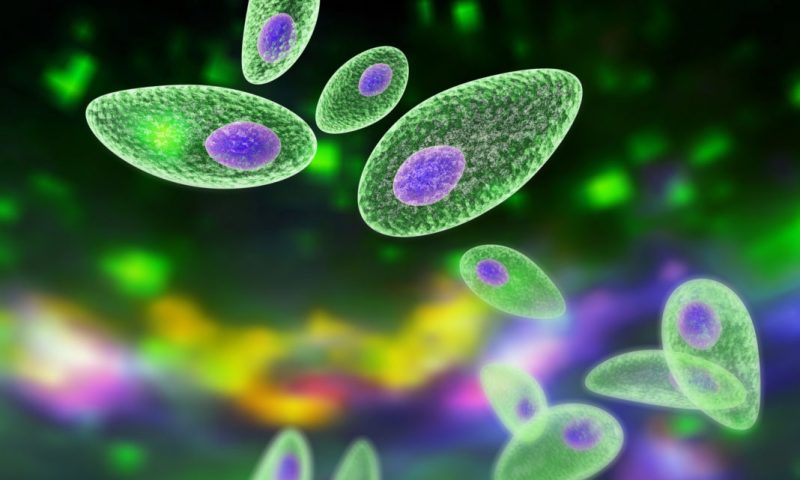To reduce the occurrence of toxoplasmosis, scientists at the University of Zurich decided that they would pounce on oocyte production, the stage in the toxoplasmosis parasite’s life cycle that is unique to cats. The scientists also resolved to be especially stealthy, that is, to create a live vaccine by genetically engineering the toxoplasmosis parasite, Toxoplasma gondii, using a technique that is rapid, cost effective, and—perhaps best of all—graceful.
This last attribute is justified, the University of Zurich scientists assert, because their technique dispenses with plasmid vectors, and so it reduces the risk of Cas9 toxicity and off-target effects.
Details of the new technique appeared in the Journal of Biological Methods, in an article titled “A streamlined CRISPR/Cas9 approach for fast genome editing in Toxoplasma gondii and Besnoitia besnoiti.” These details include the direct transfection via electroporation, as well as the use of chemically stabilized single guide RNA (sgRNA).
“Current protocols for CRISPR-mediated genome editing in T. gondii rely on either constitutive or transient expression of Cas9 as well as target specific sgRNAs encoded separately or together on transfected plasmid vectors,” wrote the article’s authors. “Constitutively expressed Cas9 carries the risk of toxicity, whilst the transient approach is laborious and error prone. Here, we present a protocol for plasmid vector–independent genome editing using chemically synthesized and modified sgRNAs. This protocol allows for rapid, efficient, and cost-effective generation of mutant cell lines of T. gondii and B. besnoiti.”
This work was led by Adrian B. Hehl, PhD, a professor of parasitology at the University of Zurich. “If we succeed in preventing the production of the oocysts,” Hehl said, “we can reduce the occurrence of toxoplasmosis among humans and animals.”
Hehl and his team noted that their new plasmid-free technique refines and extends a method that they had developed previously. This method was described in 2019 in Scientific Reports, in a paper (“An experimental genetically attenuated live vaccine to prevent transmission of Toxoplasma gondii by cats”) that described how Hehl and colleagues use RNA sequencing analysis to identify genes responsible for the formation of oocysts.
“A CRISPR-Cas9 strategy was used to create a T. gondii strain that exhibits defective fertilization, decreased fecundity, and generates oocysts that fail to produce sporozoites,” the authors of that paper wrote. “Inoculation of cats with this engineered parasite strain totally prevented oocyst excretion following infection with wild-type T. gondii, demonstrating that this mutant is an attenuated, live, transmission-blocking vaccine.”
In the current work, Hehl and colleagues emphasized how they could use CRISPR-Cas9 to make sterile parasites without introducing “side effects,” that is, unintended genetic changes. Although CRISPR-Cas9 enables precise modifications to genetic material, the method can also present disadvantages. Errors and unintended genetic alterations can creep in.
For CRISPR-Cas9 gene editing, scientists usually insert a ring-shaped piece of DNA, a so-called plasmid, into the cell. This contains all the information necessary to create the gene scissors and the elements that recognize the desired place in the genetic material. The cell thus produces all the components of the gene scissors itself. Afterward, however, the plasmid remains in the cell and can trigger additional, unplanned genetic changes.
The method used by the Zurich team works differently. The researchers assemble the preprogrammed gene scissors outside the cell and then implant them directly into the parasites. After the genetic material has been manipulated, the components are very rapidly broken down completely, with only the desired edit remaining.
“[Our streamlined CRISPR-Cas9 approach enables the introduction of single point and insertion/deletion mutations, precise integration of in-frame epitope tags, and deletions/replacements of genes at significantly reduced time and costs,” the scientists asserted. “Furthermore, it decreases the risk of Cas9 toxicity, off-target modifications, and random integration of plasmid DNA into the genome. Synthetic, chemically modified sgRNAs allow for a modular and versatile system using either the conventional endonuclease Cas9 but can be further combined with fluorescently labeled Cas9 for subsequent FACS sorting, dCas9 or Cas9 expressed from a plasmid.”
“Our approach enables the genomic sequence to be altered without leaving traces in the cell,” explained Hehl. “This means we can now manufacture experimental live vaccines without plasmids or building in resistance genes.”
Around a third of the world’s population carries Toxoplasma gondii, which puts people with a weakened immune system at risk and can trigger malformations in the womb. The single-celled pathogen also leads to economic losses in agriculture, with toxoplasmosis increasing the risk of abortion among sheep, for example.
The parasite has a complex life cycle and infests virtually all warm-blooded creatures, including wild rodents and birds. It can also be introduced to humans. In fact, more than 40 million men, women, and children in the United States carry the toxoplasmosis parasite. People typically become infected via three principal routes: foodborne; mother-to-child (congenital); animal-to-human (zoonotic).
This last transmission route may be blocked using the new vaccine development method. Because this method avoids unwanted genetic changes, Hehl questions the federal government’s plans to make CRISPR-Cas9 genome editing subject to the existing law on genetic engineering (and the moratorium, which has been extended to 2025)
“Our method, he said, “is a good example of how this new technology differs from conventional approaches to genetic engineering.” Hehl added that it is now possible to inactivate a gene without leaving unwanted traces in the genetic material, in a way which is indistinguishable from naturally occurring mutations. He argues that unlike many other controversial applications of genetic engineering, this procedure does not affect the production of food either, and thus does not constitute a direct intervention in the food chain.

